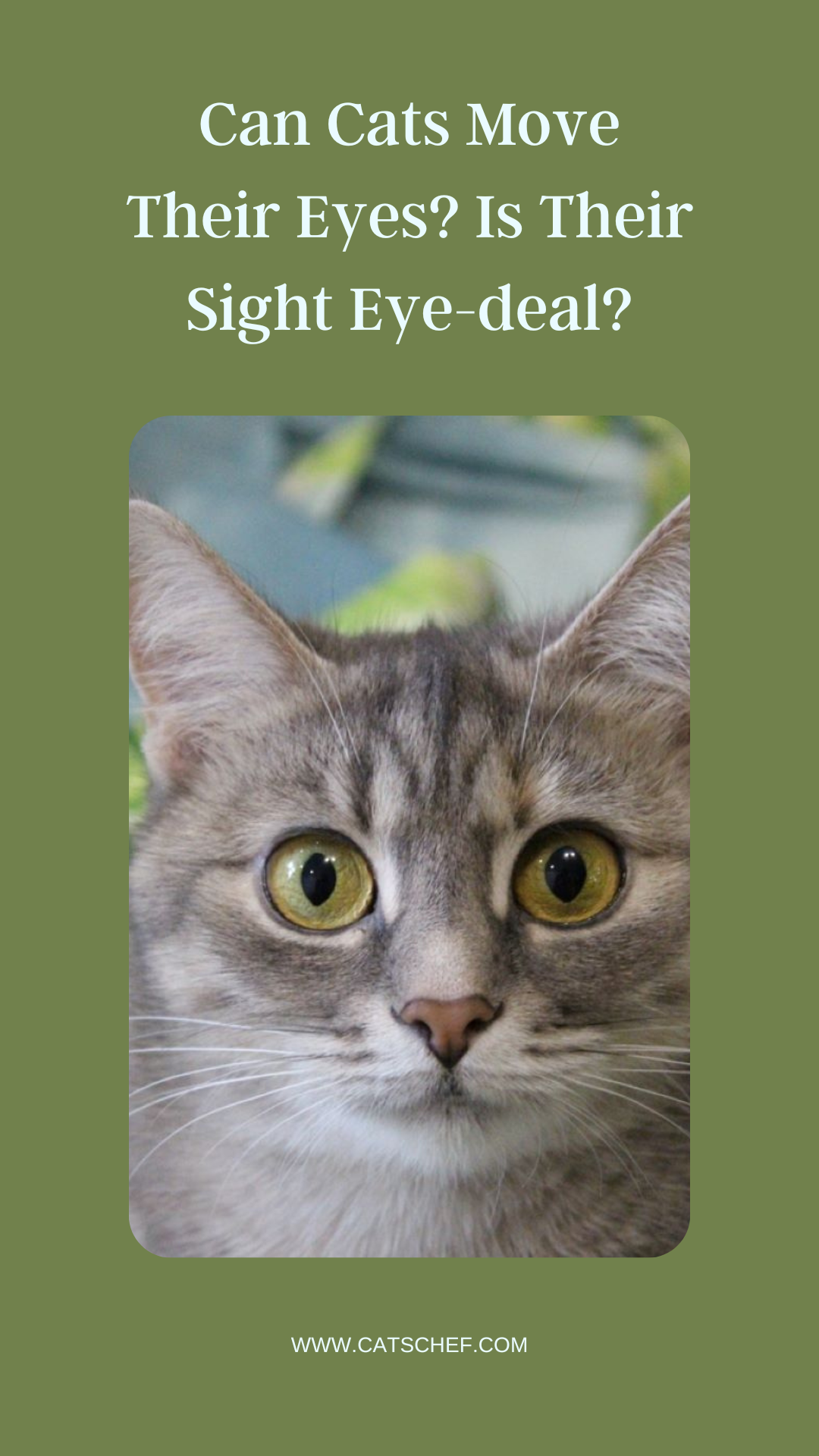Here we are, back with another interesting kitty-concerned question. Today we are asking ourselves and the universe, can cats move their eyes?
I think there’s no need to talk about how mesmerizing cat eyes are. They are so beyond gorgeous and for so long have graciously served as the inspiration for many people. Even makeup artists worldwide want to emulate felines’ best features with a technique appropriately called cat eye.
Apart from being stunning and unique, their eyes are also Mother Nature’s best creation and a powerful vision mechanism. They are equally suitable for both day and night, which makes cats extremely adept and dexterous.
You probably saw how glowy your cat’s eyes get in the dark and wondered, “What kind of sorcery is this?” Or how her pupil can get both dilated and thin. Cat eyes are a true masterpiece and something which leaves many cat parents (and others) for most of the time – speechless.
Our main concern today is whether cats can move their eyes or not. Perhaps the journey has brought you here because you’ve noticed that your kitty’s magical eyes seem always to be fixed straight ahead and never move. To be fair, you’re not far from the truth.
But, let me not spoil the ending right away. So, can cats move their eyes? What are their eyes actually like? You’ll find out soon enough.
Anatomy of cat eyes
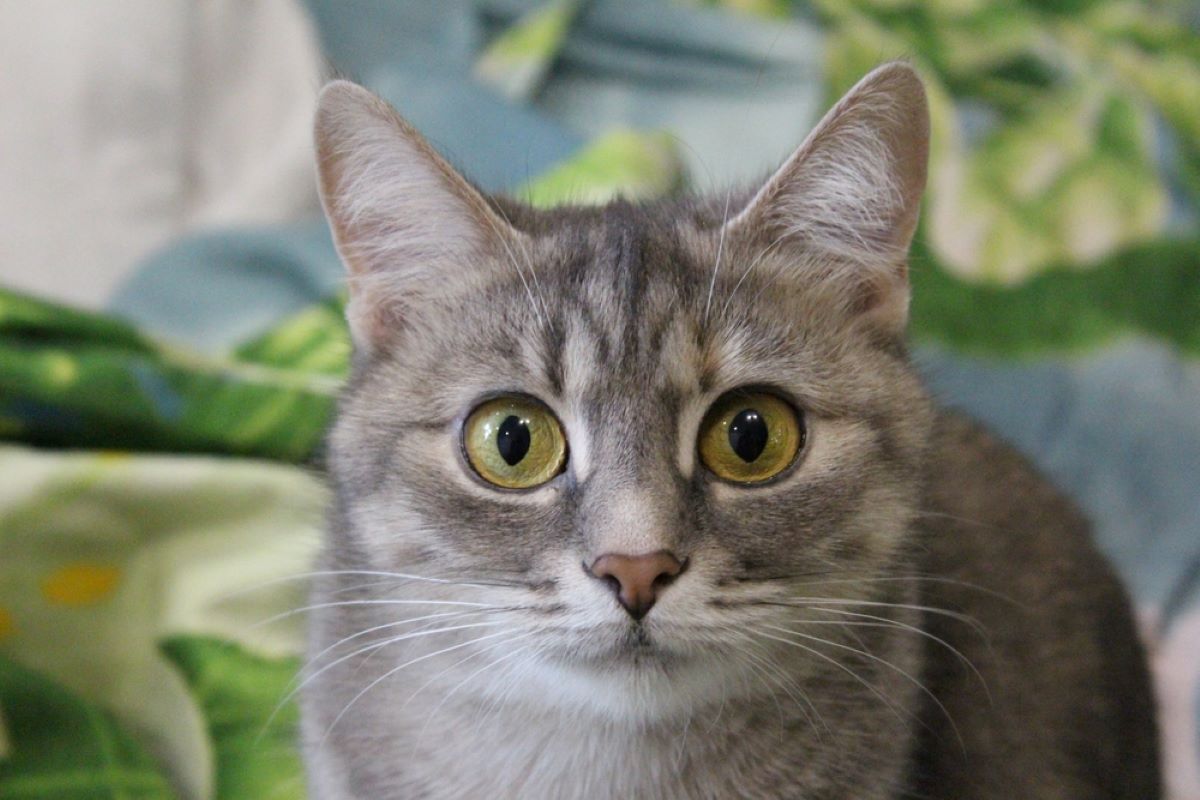
Our feline companions have huge eyes in comparison to the size of their heads. They are placed in the middle of their face in bony cavities called orbits. The white part of their eye is called the sclera, and it is, along with the inside of their eyelids, covered with a thin membrane – conjunctiva.
In front of each eye is a clear dome called the cornea whose function is to protect the eye and let the light in. The light goes into their eyes through the vertical splits known as pupils. And the round and colored part of each eye is called the iris.
Behind the iris is the lens, and lining the back of an eye is a sensitive tissue known as the retina.
Cat eyes function the same way humans do. Light rays travel from the object from which they are reflected to the cornea, through which they enter the eye. Then the cornea bends the light rays, so they can pass through the pupil and the lens.
Then, they further bend and focus those light rays on photosensitive rods and cones in the retina. The retina converts those light rays into nerve impulses and sends them to the brain. The brain then interprets those impulses and forms an image via the optic nerve.
Can cats move their eyes?

Now that we have a rough idea of what cat eyes are like, we can finally seek to answer the question. So, can cats move their eyes?
And the answer is a resounding “No!” Cats cannot move their eyes and that’s because they don’t have the muscles needed for eye movement. Just like us, they have limited peripheral vision and have to move their head around in order to see things that are located on either side of their head.
Animals who can actually move their eyes are horses, deer, cattle, sheep, and goats.
However, despite being unable to move their eyes, cats can move their eyelids by squinting, blinking, or entirely closing them, they can either dilate or constrict their pupils, they can roll their eyes, control the amount of light that enters their eyes and adjust their vision however they need it to be.
The world through feline eyes: what do cats use their eyes for?
Even though felines can’t move their eyes, they’re still able to do plenty of stuff with them. It’s not like they’re always blankly staring at the ceiling, although they do that quite often as well.
If you have a fluffer of your own, you probably frequently witness the strange looks she gives to you or to a potential ghost in your home.
There’s that judgy squinty look that somehow seems to unravel all your deepest darkest secrets. And then there is the one with pupils as big as the whole eye, full of love and affection, but always aimed at the kibbles, and rarely at you.
And, a personal favorite of mine, the deadly stare! Boy, that one is so intimidating; it makes you both scared and uncomfortable.
So, as we’ve already touched upon, cats use their eyes for many interesting things like a means of communication, a way to regulate the flow of light or to fine-tune their vision. Below, I have explained everything in more detail. So, take a look and prepare to be a-meow-azed.
1. Communication
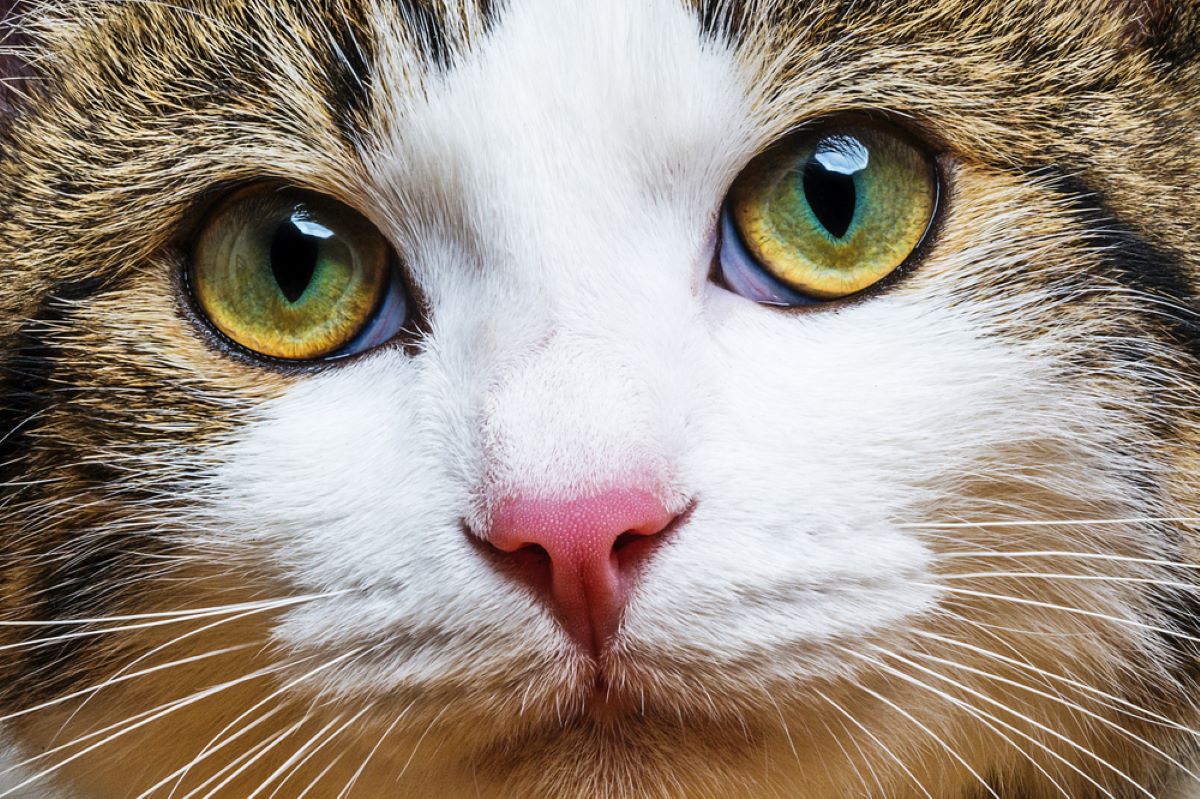
Cats can use their eyes to communicate, which is a hundred times more impressive than moving them (if you ask me).
Cats use their eyes to express their feelings and desires. In what way, you may ask?
For example, if their pupils are dilated, that means they feel calm and secure. Cats will not willingly expose their eyes to any harm, so if they approach anything with their eyes wide open, that means they’re full of trust and love. This can be a sign of their excitement, as well.
Another sign of affection and trust is when their eyes are squinted or half-closed. They do this when they are completely relaxed, and appear as though they’re about to fall asleep.
If their eyes are open, and they’re staring at something without blinking, that’s their way to assert dominance or aggression. This happens especially in households where there are other pets around. This way, cats are communicating that they’re in control.
And if their pupils are constricted, that’s a sign that they’re angry or irritated. When their pupils are like this, they are probably minutes away from attacking something.
Bonus hack!
If you wish to communicate with your kitty, but you just don’t know how (since, you know, both of you speak different languages), you can try blinking at her.
Cats don’t blink as much as we do. An average human blinks approximately 15 times per minute, while cats can go for hours without their eyelids meeting. So, in order to establish whether your cat likes you or not, you can blink at her, and if she blinks back – congratulations, she loves you and trust you!
However, never stare into your cat’s eyes! I believe it’s not your intention to get on her bad side. Staring, as we have said, is a way to profess dominance and aggression. Cats might love to stare, but they sure don’t like to be stared at.
You’ve probably noticed how cats always seem to choose the least cat person among a crowd. It’s because people who don’t like or simply don’t care for cats will never make eye contact with them, which cats highly appreciate.
So, if you want your kitty to come to you, just ignore her!
2. Regulation of the light

Not sure if you knew this, but cat eyes are actually indented for night vision. So, during the day they have to regulate the amount of light that enters the retina, so they don’t get blinded by the brightness of it. In these cases, their eyes will narrow to a slit, so they could be able to see everything properly.
The opposite happens at night. In low-light conditions, their pupils completely dilate to form sphere shapes, which allows the maximum amount of light and therefore, a better vision. This way, cats can have a wider picture of their surroundings.
3. Improvement of the vision
Sure, cats cannot move their eyes, but they can use them to their advantage which many would envy.
Cat eyes are forward-facing, and they work together to create binocular vision. As a result, cats are able to have a depth perception of three-dimensional imageries.
By moving their eyelids, they can narrow the perceived object into a horizontal slit. By doing so and by narrowing their pupils vertically, they are able to fine-tune their vision and have a high-quality perception.
Are cats good hunters even though they can’t move their eyes?
I hope all the cats in the world have their ears covered right meow since surely none of them wishes to hear this question. We’re sorry, kitties! We’re not trying to offend you in any way.
There’s no doubt that cats are amazing hunters. They are crepuscular creatures whose eyes have a special modus operandi. There are layers of cells known as tapetum lucidum at the back of their eyes which serve as a mirror.
There’s a membrane that reduces the threshold of vision (which refers to the minimum light energy that can be detected) to around six times less than the amount required for human vision. And because of this, cats are able to see in the dark without any problems.
That layer of cells also bounces the light back to the retina, so cats can make use of it. This reflection is what causes their eyes to glow in the dark.
Moreover, while hunting, cats are able to focus solely on their prey, and not be easily disturbed by the surrounding. This is another excellent feature of expert hunters.
Can cats move their eyes unintentionally?
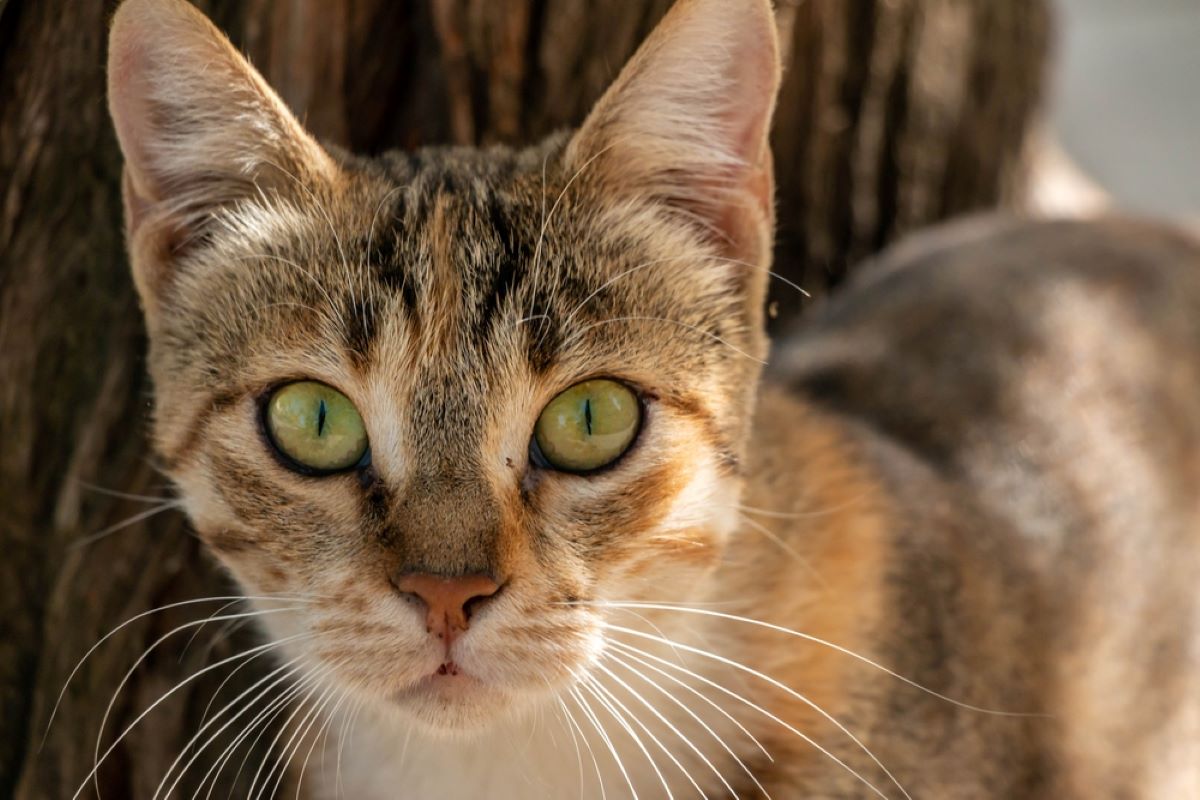
“It says right here that cats can’t move their eyes. But, I swear, I saw my fluffball’s eyes move back and forth on several occasions. Can cats move their eyes unintentionally, purrhaps?”
If these are your exact current thoughts then I hate to burst your bubble. The answer is – Yes, your cat might be moving her eyes unintentionally, but it’s not because she’s one of the few who just so happens to possess that ability. The reality is a tad bit sadder.
Unintentional eye movement in cats is of medical nature, and its technical term is nystagmus. There are two types of nystagmus: jerk and pendular.
Jerk nystagmus refers to slow eye movements in one direction with a rapid correction phase in the opposite. And pendular nystagmus refers to small oscillations of the eyes with no distinctively slower or faster movements.
Feline nystagmus is one of the symptoms of a condition called Vestibular disease. Other symptoms of this condition can be incoordination, falling or circling to one side, head tilt, and frequent nausea and vomiting.
The vestibular apparatus is located in the inner ear, and it’s responsible for maintaining balance. Experts are not entirely sure what causes vestibular disease but speculate that it can occur due to middle or inner ear infections.
They believe that tumors as a cause also have to be considered, especially in older cats. Some other causes include exposure to certain toxins or drugs. However, the majority of diagnoses are idiopathic, meaning the exact cause isn’t known.
Diagnosis and treatment of nystagmus
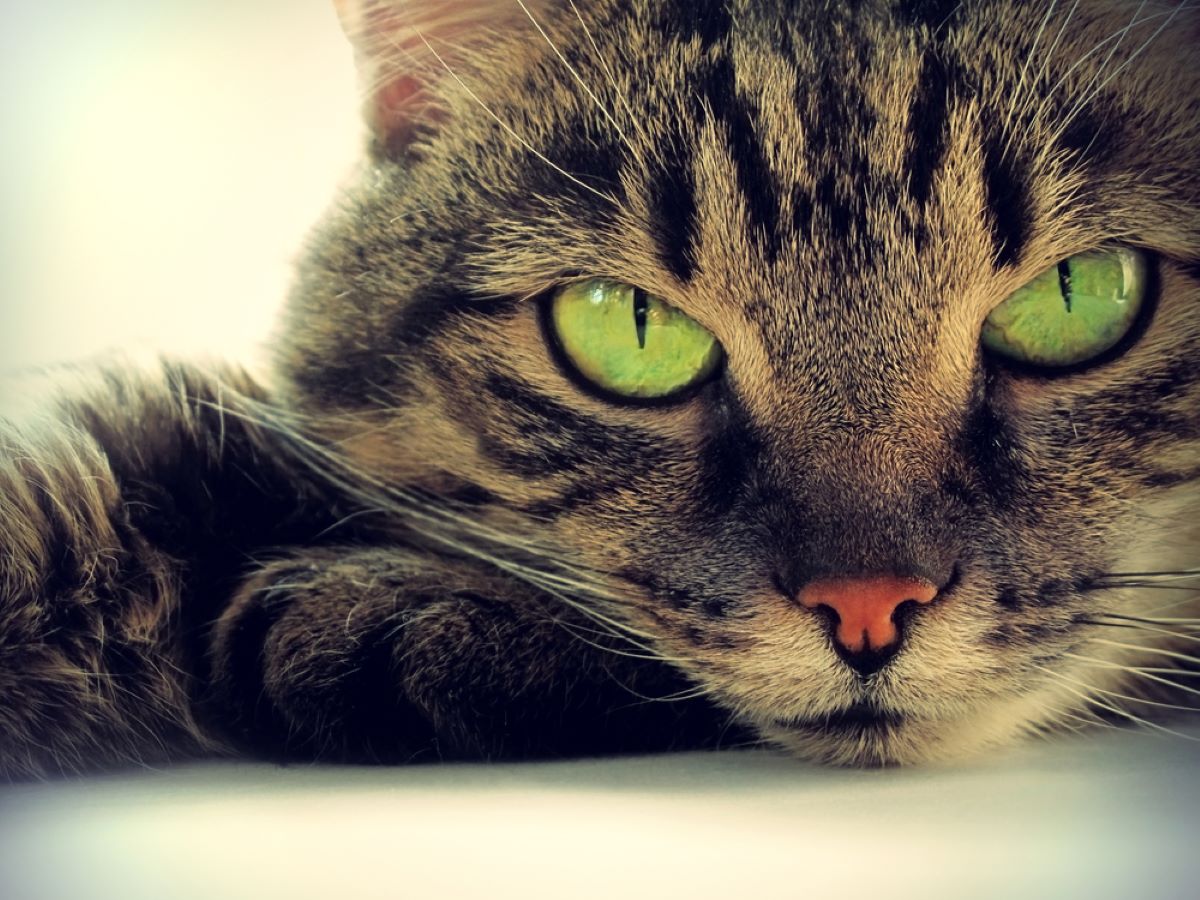
Currently, there is no specific test that can be taken to determine feline vestibular disease. Most vets will form their diagnosis based on clinical signs. However, there are certain tests that can be taken to rule out (or determine) a more serious cause.
Those tests can be an analysis of cerebrospinal fluid, computerized tomography (CT) scan, magnetic resonance imaging (MRI), blood and urine tests, or an analysis of ear cultures, and cytology. The vet chooses the right test based on the cat’s medical history, clinical signs, and overall physical examination.
It’s hard to say what an adequate treatment is since the exact cause is often unknown. So, the treatment and care depend on the underlying cause and the severity of the kitty’s condition.
The best thing to do if you think your cat might be dealing with nystagmus and therefore vestibular disease is to take her to the vet as soon as possible. He will know what’s exactly wrong with her and how to help her.
Our love for our furbabies isn’t measured by the number of treats and cuddles we give them. But rather in sincere care and precautions we take, so they could be healthy and happy and live their furry little feline lives for as long as possible.
Therefore, a regular vet visit should always be your first choice.
